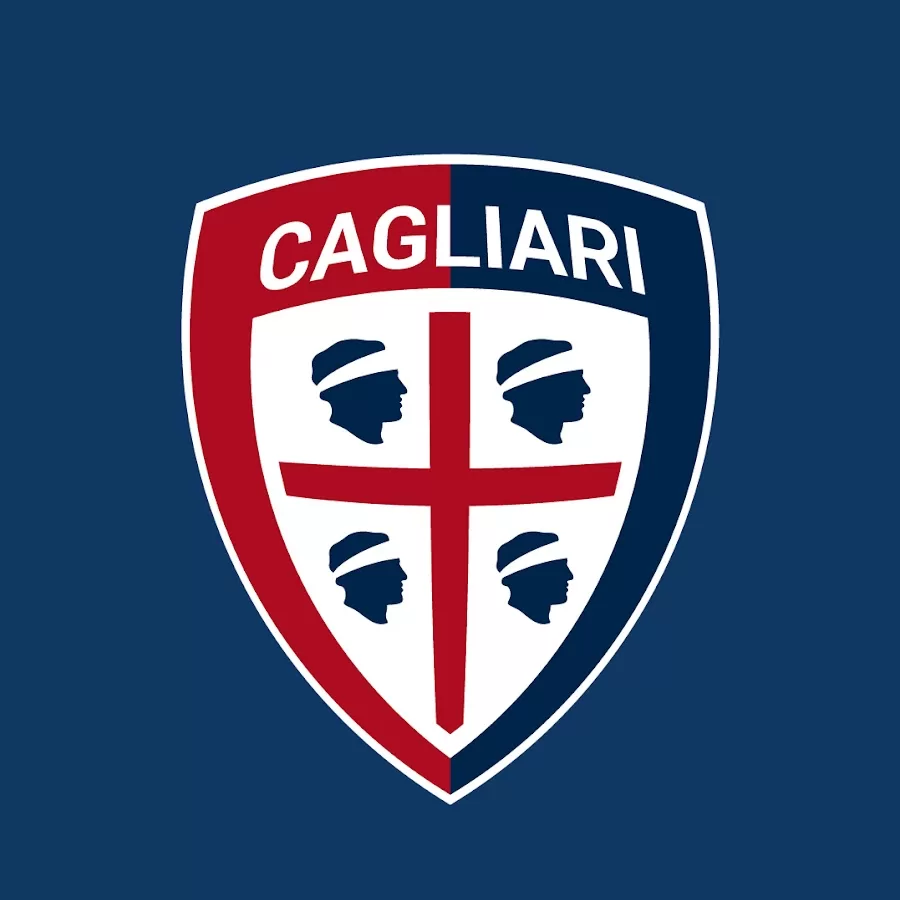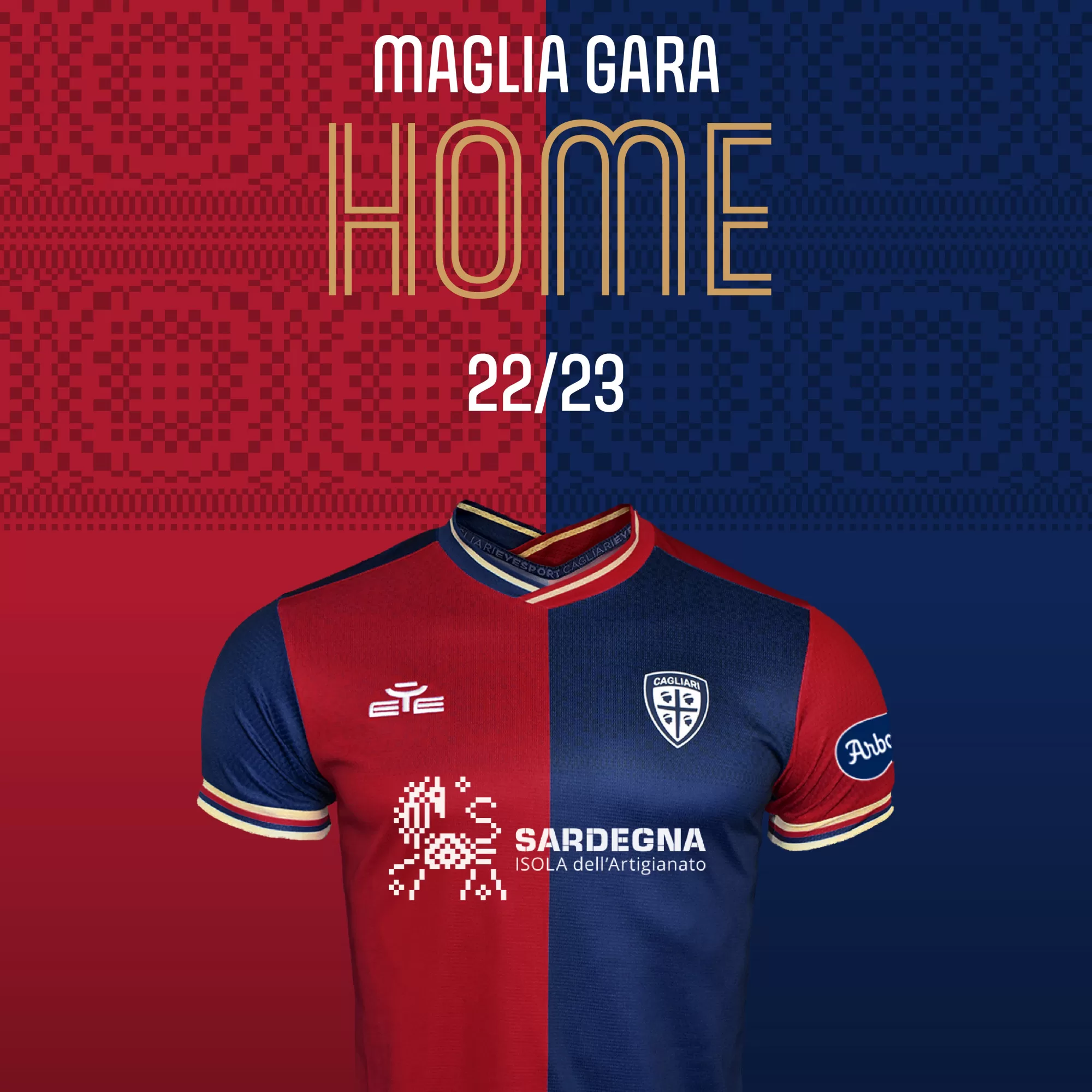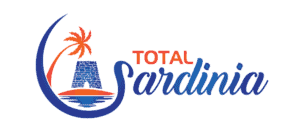The flag of Sardinia is intriguing and mysterious, much like its origin. The flag is known as ‘I Quattro Mori’ which translates to ‘The Four Moors’. It consists of a red St Georges cross, with four back Moor heads positioned in each of the four partitions.
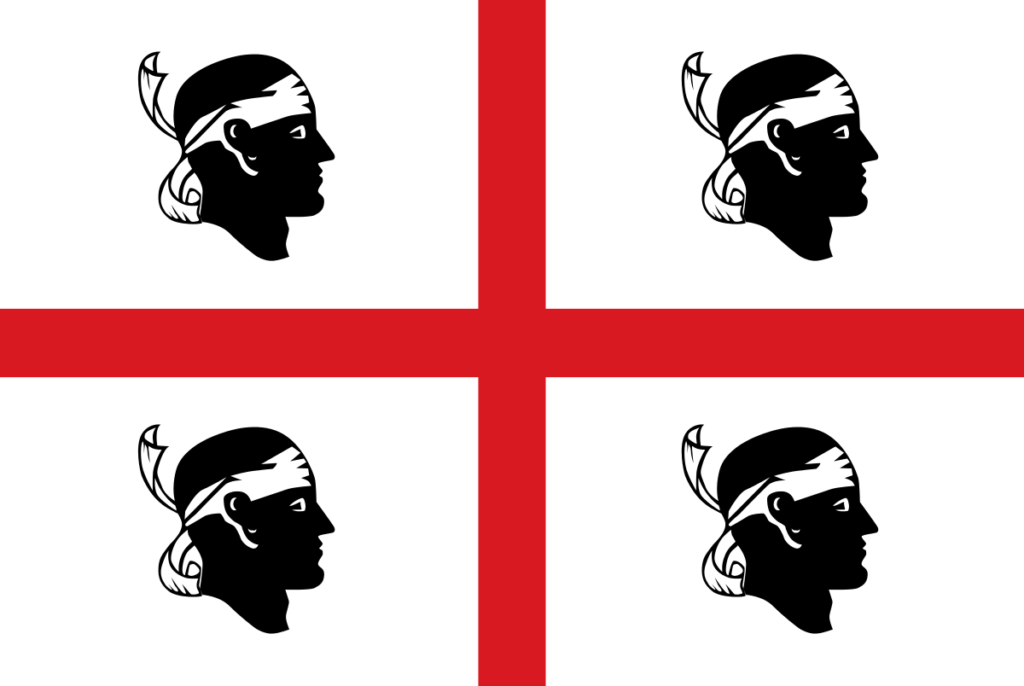
In the updated flag that is used today, the four heads are looking to the right, whereas prior to 1999 the faces looked towards the left. For me this signifies Sardinia’s relationship with Italy which is in the East.
In earlier times Sardinia was part of the Kingdom Of Aragon (Modern day Spain), which is direct to the West, which could have been the reason the moor heads were designed to look to the left.
The origins of this unique flag are shrouded in mystery, , and what remains could be a legend. There are many theories which connect the flags origins with historic events. The debating floor is still open on this one, but I want to share with you some of the most interesting and plausible origins that I have come across.
The Four Moorish Princes And The King Of Aragon
The flag has its origin going back 740 years. The most probable explanation is that the four moors represent four Moorish princes that were defeated on the battlefield by the Crown of Aragon.
The Crown of Aragon was a confederation of Kingdoms in the Mediterranean, based in the Iberian Perlisola and stretching to Corsica, Sardinia and the south of Italy. In 1096 Peter I of Aragon and Navarre defeated the forces of Al-Mustra’in of Zaragoza II in Alcoraz (a city in the north-east of Spain.)
Following the battle, Peter I, received a crusader’ shield depicting the cross of Saint George, and the decapitated heads of Four Moorish King’s, or Princes to commemorate the crucial victory.
It was said that Saint George himself appeared during the battle, and helped by killing Moors. Some legends believe George even collected the heads of the four bravest and great moor princes.
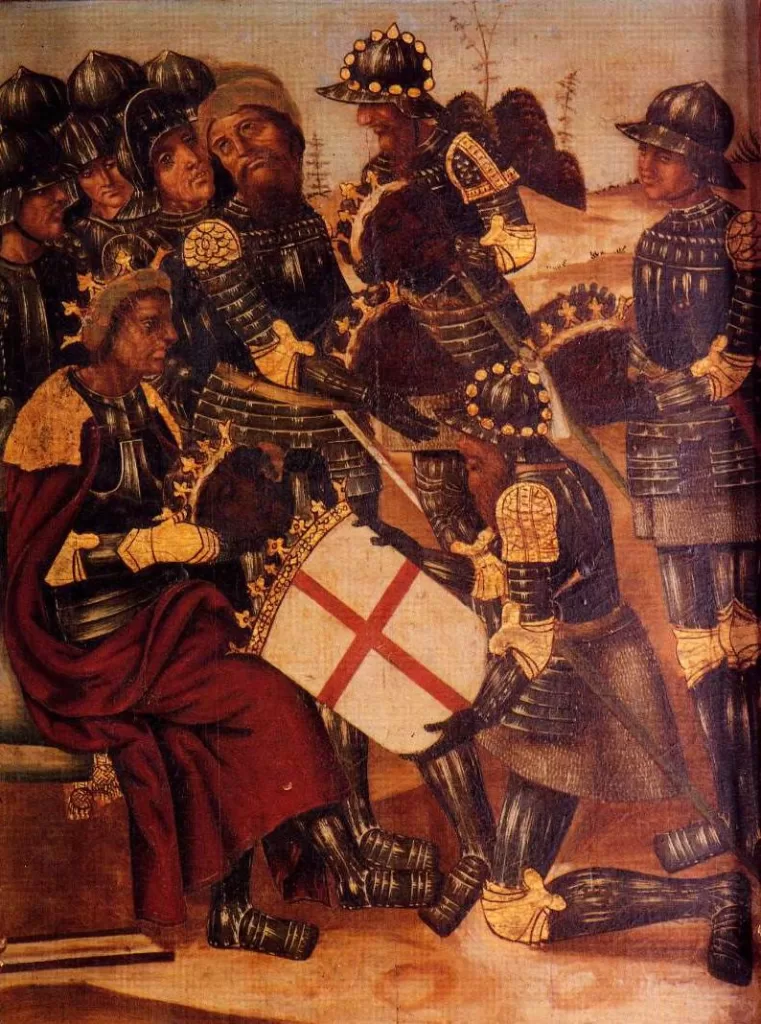
The event was of such importance that the a form resembling the Sardinia flag was incorporated into the coat of arms of the Kingdom of Aragon. The beheaded moors became a symbol of the war against the Muslim invasion of Southern Europe.
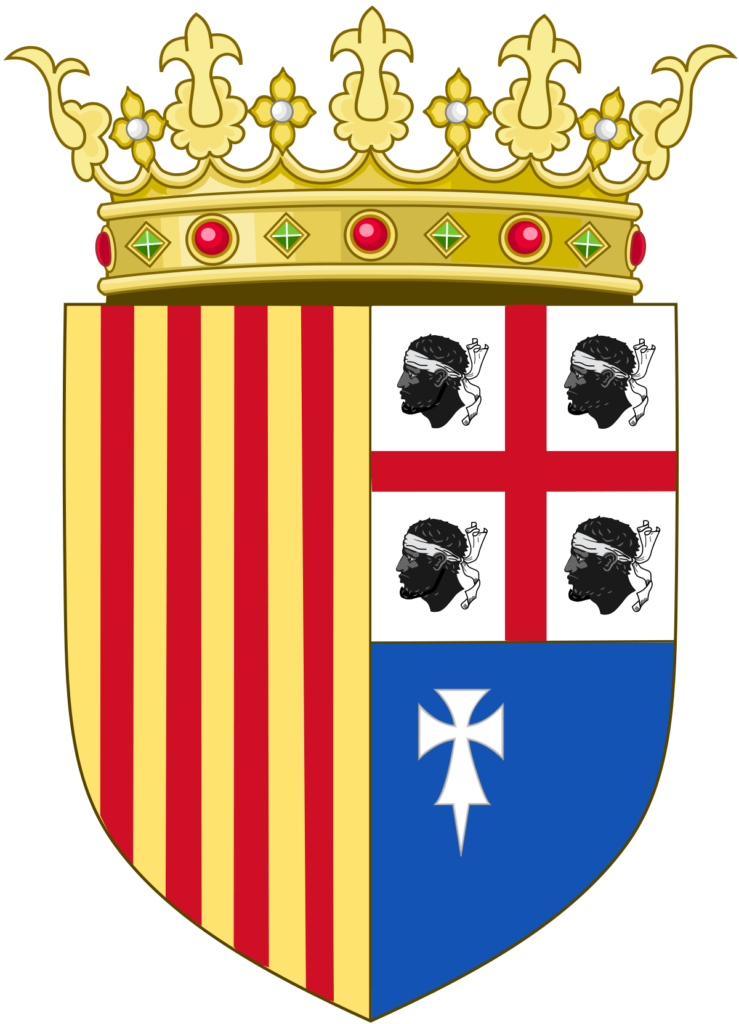
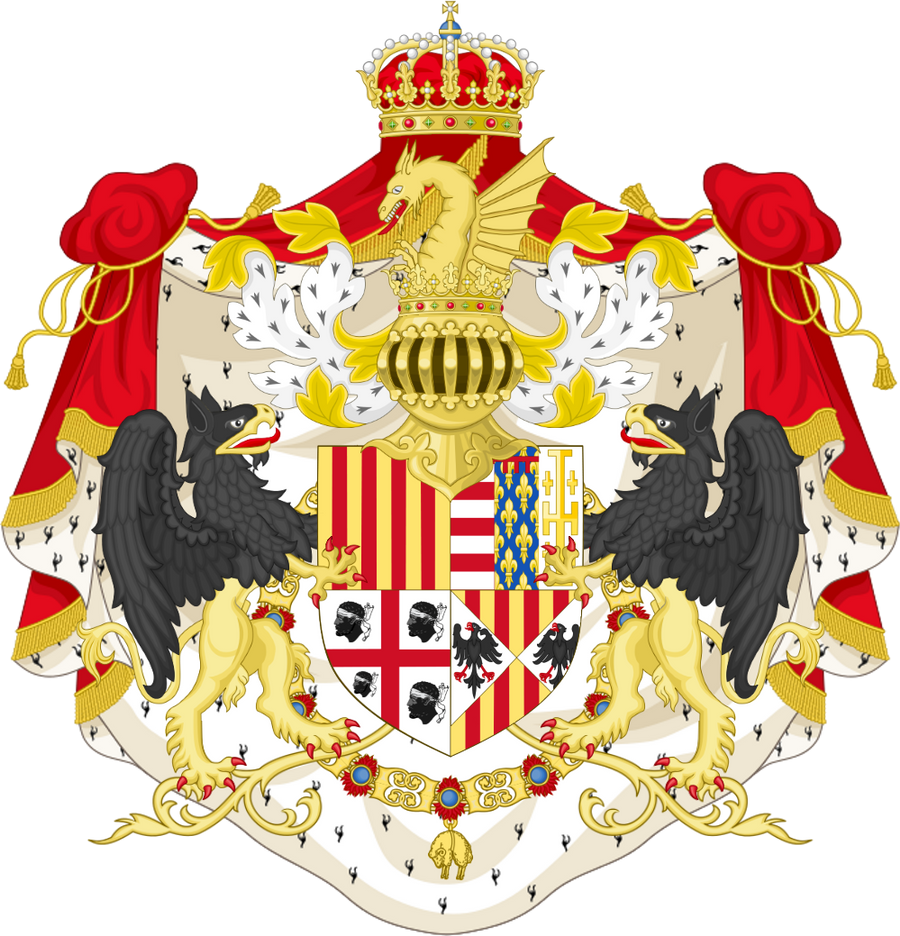

The four moor heads could represent four victories against Zaragoza, Valencia, Murcia, and the Balearics, instead of the decapitated heads gifted to the King after the battle.
The Four Medieval Kingdoms Of Sardinia
Many people believe that the four heads represent the four medieval kingdoms of Sardinia known as the Giudicati in Italian. They took power in Sardinia from the 9th to the 15th Century; each domain had its ruler, who was known as a judge and had the powers of a king.
The island was facing raids from North African pirates, and later from the Arabs of Spain. The Sardinians were very successful and resiting the attacks, the Pope wrote a letter to one of the Sardinian kingdoms requesting that they help in defence of Rome.
- The Kingdom of Cagliari with the capital in Santa Igia
- The Kingdom of Arborea with the capital in Oristano,
- The Kingdom of Gallura with the capital in Civita,
- The Kingdom of Torres with the capital in Porto Torres, Ardara, and then Sassari.

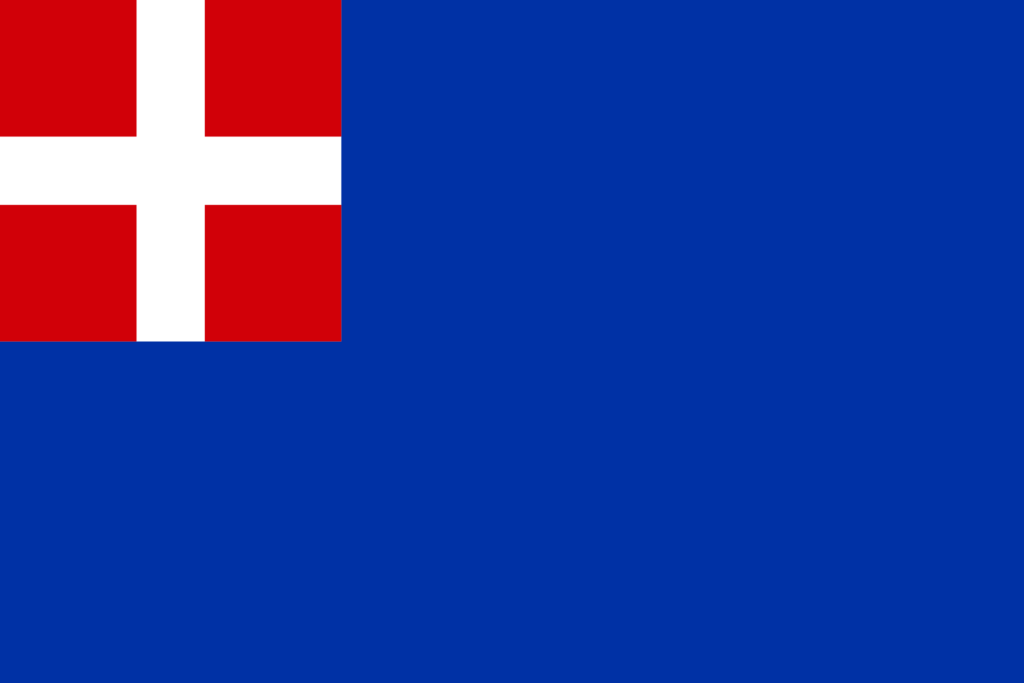
The Moors were a relentless enemy to the Kingdom of Sardinia, and it could be possible that the heads on the flag of Sardinia, represents each Kingdom of Sardinia and their combined strength. The Kingdom of Sardinia was slowly broken up by the powers in Pisa and Genoa.
It wasn’t until the 14th Century when the Kingdom of Sardinia joined the Crown of Aragon, and ‘I Quattro Mori’ became associated with Sardina. Sardinia exists in the middle of the Mediterranean sea, along with Corsica, control over the sea was so important to the Kingdom of Aragon.
The Kingdom constructed Towers along the whole coast of Sardinia, some still standing today. The Four Moors flag was flying from many of the towers to show the moors that they are not welcome, and if they try to invade, then they will face the same fate as the four moors depicted on the flag.
The Wedding Of Petronilla
The Sardinia flag appears in a painting from the 16th Century by Filippo Ariosto, showing the Wedding of Petronilla and Berenguer IV. Petronilla later became the queen of Crown of Aragon, Sardinia would have been under her power.
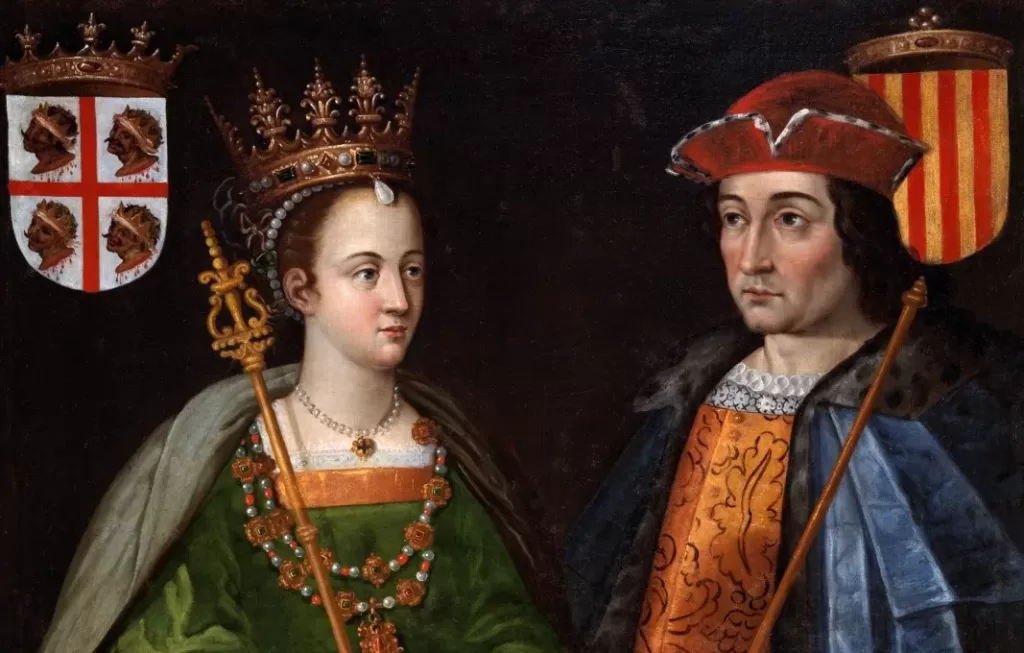
The Sardinian Flag In Modern times
Throughout the centuries, the flag had many variations, at one time showing the faces looking to the left (possibly west to the Kingdom of Aragon, where the flags origins are), sometimes with crowns, sometimes with bandanas covering the eyes, and some times with earings. Maybe the flag was changed depending on the enemy of the moment, who threatened the Kingdom of Sardinia.
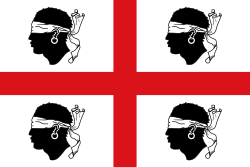
In the 18th Century, the representation of the flag was fixed by the Piemontese government, who ruled over Sardinia. It was done so for continuity for official documents and coinage.
The latest version of the flag and the most commonly seen one today was adopted on 15th April 1999. The autonomous region of Sardinia first used it in 1950. The region law describes the format of the flag as such: a white field with a red cross and a bandaged Moor’s head facing away from the left (the edge close to the mast) in each quarter”
facing away from the left (the edge close to the mast) in each quarter”

The flag shows the four heads looking the right, facing East to the Kingdom of Italy, which is now under control of the island, instead of meeting toward the ancient Kingdom of Aragon in todays Spain. The blindfolds were removed from the eyes, which represents freedom and liberation. Maybe also signifying the end of fear of invasion by another Kingdom or Country. The looped earing was also removed in the revised version of the flag, which again symbolized liberty.
The Flag Of Corsica

The flag from the French island of Corsica, immediately to the North of Sardinia is very striking. It shows a single moor head on a white background. Both of these islands have a shared history battling against a Moor insurgency. Sardinia and Corsica were both islands of vital strategic importance to the Kingdom of Aragon. They both have chosen Moor heads to represent their history and represent their proud populations.
Cagliari Football Club And I Quattro Mori
